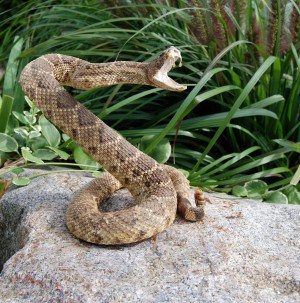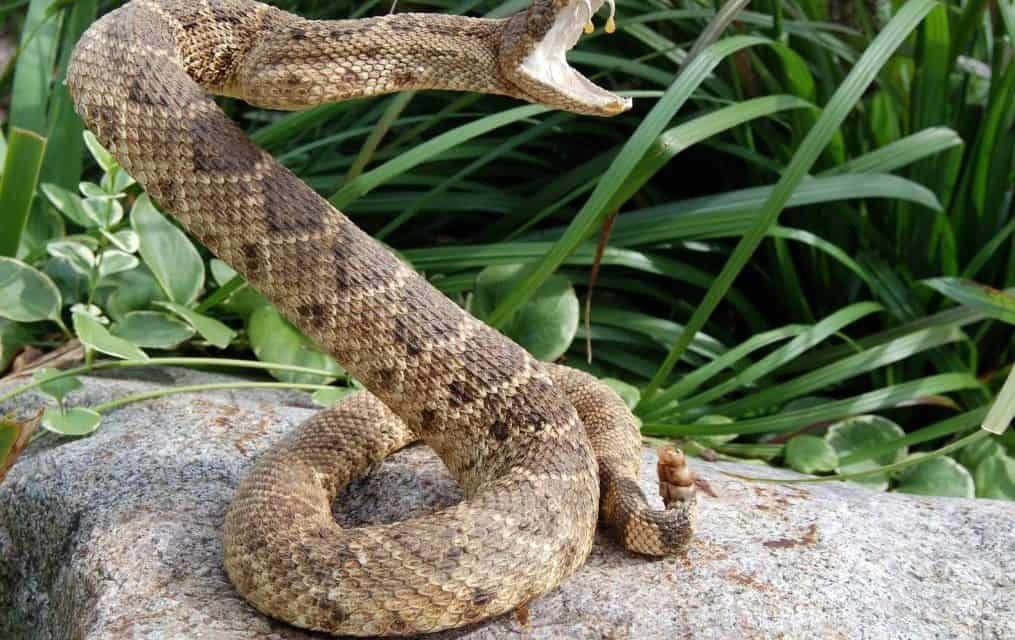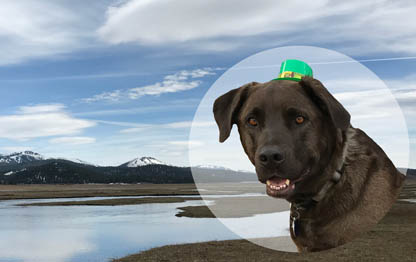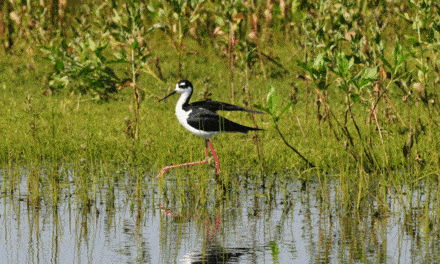By Melissa Wynn
[media-credit name=”bigstockphoto” align=”alignleft” width=”300″] [/media-credit]
[/media-credit]
Here in the Sierra we have only one venomous serpent, the Western Rattlesnake. Many unaware hikers are surprised when they encounter these slithering reptiles in the cooler climate of the higher elevations. But Western Rattlesnakes are quite common here. We don’t see them too often since we do most of our wandering by day and as the old songs tell us “the snakes crawl at night”. Like all reptiles, Western Rattlesnakes are cold blooded creatures that cool themselves by finding shade above or below ground, and warm themselves by basking in the sun or lying on sun heated asphalt,concrete or rocks. In the cold winter months they hibernate in large groups in crevices on rocky ledges. In the spring the group awakes and each goes its own way for the summer. While many snakes simply lay eggs, rattlesnakes carry their 4-25 eggs inside until they hatch and then give birth to an average of 9 or 10 live, self sufficient young, about 10 inches long. These tiny pit vipers come equipped with fangs and powerful venom along with the instinct to curl and then strike.
The baby snakes are born with a horny barb on the tip of the tail but do not get their first rattle until they shed their skin or molt for the first time. The number of rattles on a snake is not an accurate way to calculate the age of an individual because a young snake may molt up to three times in a single year, adding three rattles, and older snakes lose rattles to accidents and predation. The average adult Western Rattlesnake is 3 to 4 feet in length with a chubby body. All species of rattlesnakes found in California have rattles, a triangular head and vertical cat like pupils. Western Rattlesnakes “hear” by feeling vibrations that travel through body muscles to the jawbone and then to internal ear parts. There is no outer ear
Western Rattlesnake are carnivores that feed on mice, rats, small rabbits and occasionally a fallen baby bird or eggs. Digestion takes a lot of energy and leaves the snake in a vulnerable position since prey is swallowed whole leaving a big lump in the middle of the snake. Most rattlers lay low and out of sight for several days after eating. Although I find Western Rattlesnakes unsettling when surprised by one, they are actually fascinating creatures.
One should NEVER attempt to handle a rattlesnake of any species. All are POISONOUS and extremely dangerous to people and their pets. Always be aware of rattling sounds when hiking or camping. The best defense is to keep distance between yourself and a rattlesnake. Chances are the snake wants to get away from you, too. Never corner a rattlesnake. Give a way of escape for the snake and yourself. As a last resort, a stick, longer than the snake, can be used to toss it out of the path. We share our mountain home with many dangerous wild animals, so remember to be aware of your surroundings when playing in the great outdoors. Be safe out there.
facts courtesy of US Forest Service, desertusa.com












